A guide to traditional Polish cuisine in the region of Podlasie, Eastern Poland
After taking you to the Bialowieza forest and trying to convince you why Podlasie should be on your bucket list, this post will set your mouth to water.
I am talking about Polish cuisine and more particularly about the tasty food of the Podlasie region, North Eastern Poland.
So, here goes my list of the best Polish food to try in the Podlasie region, one of the most pristine regions to visit in Poland. And, in my opinion, home to some of the best Poland foods!

Disclaimer: I have been a guest of Podlaskie Travel and Polish Tourist Board in exchange for an honest review. All my opinions, as always, are my own. This post contains affiliate links. In case you purchase one of the items, I’ll receive a small commission. The price remains the same for you.
Table of Contents
Practical Information for travel to Podlasie Region, Eastern Poland
✈ Book flights to Poland with Skyscanner
✔ Book your tours with GetYourGuide
➳ Find the best hotel deals with Trivago
❖ Get the best car rental deals with DiscoverCars☘ Get the best discounted outdoor gear (outlet) at REI.com
✎ Never leave without travel insurance. I get mine at HeyMondo. It’s easy to set up, cheap, and reliable.$ Withdraw money without hidden fees and avoid exchange rates with Wise (you’ll get a free card on top!)
⚘ Get a travel guide in order to prepare your trip. I recommend the Lonely Planet Guide – Poland
What makes the food of Podlasie so different from the rest of Poland?
Well, it’s the unique cultural mix and its location on a border zone that has seen many cultures from all over Europe coming and going. All of them have left their traces which can be observed in the languages, temples but mostly, on the restaurants’ menu cards.
Indeed, the melting pot of Polish, Lithuanian, Russian, Belarussian, Ukrainian, Jewish and Tartan cultures is reflected in the Podlasie cuisine.
But even more distant cultures influenced the Podlasie cuisine such as the German, the Czech, the Austrian,… Making the traditional food of Poland’s Podlasie region truly unique and delicious!
This pristine and somehow wild region has many tempting and scrumptious traditional cuisines up its sleeves.
Some of them are nowadays considered as the most famous Polish food such as pierogi or tasty, cold soups. In Poland traditional food is available everywhere, so I want to share the best Polish foods so you know where to start.
Podlasie has numerous sweet and savory items to offer that I will share with you in this list of Polish famous food. It is nearly impossible not to fall in love with the food of Poland, so I hope you enjoy this mouthwatering introduction to Podlasie Polish cuisine.
Because you’ll definitely be hungry after reading this post, I have also included a few traditional Polish food recipes for some of the best Polish food dishes!
In case you travel to Podlasie, don’t forget to read about the food workshops near Bialowieza and other things to do near the Bialowieza forest.
Enjoy your meal, ehm… the post!
13 Traditional Polish Food to Try in Podlasie
1. Sekacz: Polish Tree Cake
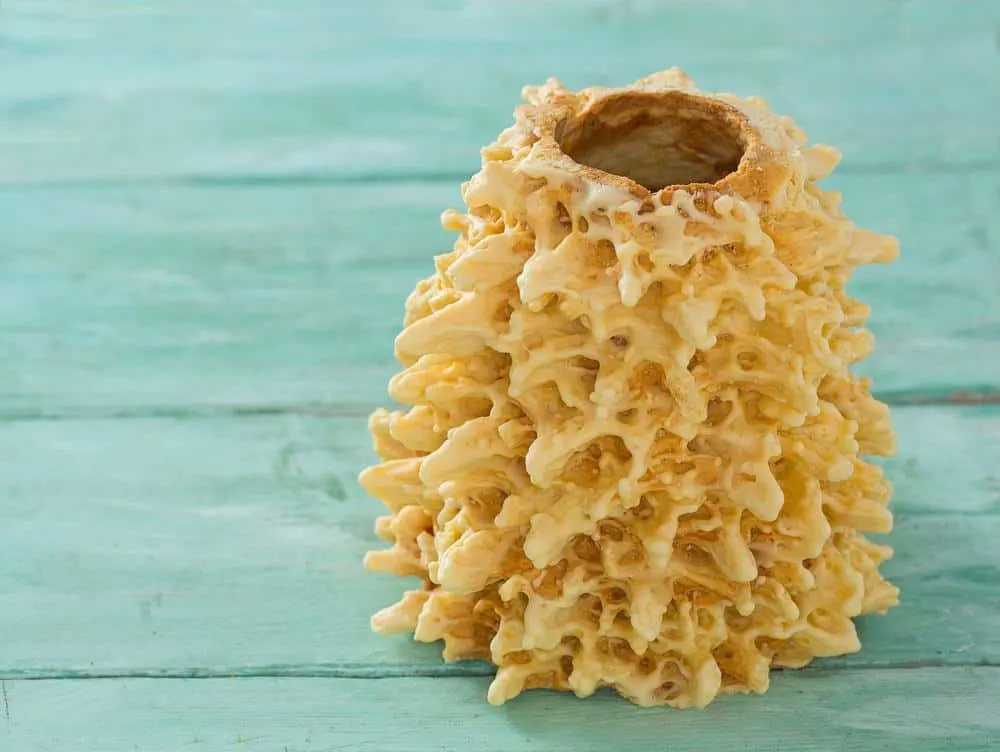
The tree cake (Sekacz) is probably one of the most emblematic dishes of the Podlasie region. Usually only eaten at weddings, you can nowadays find it on many occasions. This dessert should be at the top of your Polish food list, especially if you have a sweet tooth!
It’s easy to guess where the Polish tree cake got its name from it looks like a tree, spruce with little branches. Its tall size is impressive and looks like a tree with big knots. When you cut it, you will discover amazing layers of dough.
However, the process of making a Sekacz cake tree is particularly tedious. Most people don’t prepare this Polish dessert regularly at home, given the energy and time it demands. Actually, it takes hours to prepare a Sekacz cake tree… over the open fire!
And now, for one of my favorite Polish food recipes… Sekacz cake!
Recipe
Sekacz - Tree Cake from Podlasie, Poland
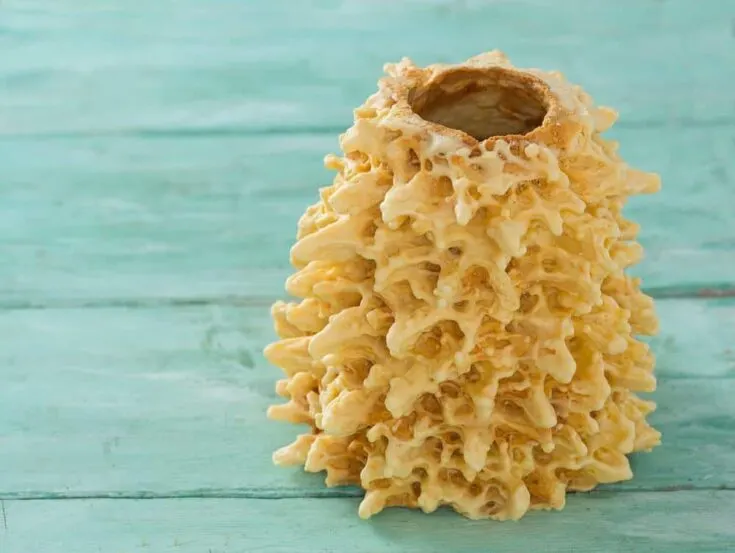
This is one of the oldest traditional Polish recipes but it is definitely a challenge to prepare this at home. Fun fact: Sekacz can last six months!
Ingredients
- 1 kg of butter
- 4 packets of vanilla sugar
- 40 eggs
- 1 kg of flour
- 1 liter of sour cream
- 2 lemons
Instructions
- A traditional Sekacz is made by mixing 1 kg of butter with 4 packets of vanilla sugar until it dissolves. Add the egg yolks from 40 eggs and stir.
- Now, 1 kg of flour is slowly added to the egg yolk mixture and stirred.
- Then, you add 1 liter of sour cream, the juice from two lemons and some aroma, and mix it to get an even batter.
- Keep this batter aside and whisk the egg whites to get a thick, foamy texture. Now, you pour in the egg whites and get a fluffier cake.
- On an open fire or a big oven, the batter is gradually poured on a rolling pin. Baked for over 3 hours! But that’s not enough.
- Let it sit for 5 hours and only then, it solidifies and hardens enough to stand. Voila! You have your traditional Sekacz.
You can serve it plain or drizzle, with chocolate or sugar icing. There is no going back once you try this Polish delicacy! With every layer of this spit cake, you can taste the richness of cream and fresh eggs.
Nutrition Information:
Yield:
1Serving Size:
1Amount Per Serving: Calories: 15550Total Fat: 1184gSaturated Fat: 668gTrans Fat: 41gUnsaturated Fat: 405gCholesterol: 10116mgSodium: 9570mgCarbohydrates: 852gFiber: 32gSugar: 62gProtein: 387g
2. Babka: Polish Potato Pie

You won’t stop eating this one until it’s all gone! Who would have thought that your “simple, always there in the kitchen potatoes” can create culinary wonders?
Our hosts at Siedlisko Soce introduced me to this ‘potato marvel’ and a list about Podlasie cuisine wouldn’t be complete without babka, the famous Polish potato pie. It can be compared to a dense potato puree with Polish sausages inside and gratinated with bacon and cheese.
This hearty meal can come as a side dish or even as a main course. Luckily, it’s quite easy to prepare Polish potato pie at home! Here goes the recipe for Polish babka.
Buy here the best Polish cookbooks
Do it at home:
Babka: Polish Potato Pie

This dish has become so famous that there even is an annual ‘babka competition’ dedicated just for it. Babka is one of the best Polish dishes you can enjoy when traveling to Podlasie.
Ingredients
- 2 and ½ pounds of potatoes
- 2 onions
- 3 eggs
- diced and fried bacon
- seasonings
Instructions
- Start by grating 2 and ½ pounds of potatoes and wash them with water to remove starch. Push out all the water to remove as much moisture as possible.
- Mix the potatoes with onions, eggs, diced and fried bacon, and seasonings, transfer to a microwavable dish
- Bake them in a preheated oven until completely crispy on top.
- Cut the pie into slices and serve it with cream or dips. You can have this at breakfast, brunch, lunch, dinner, or at any time at all. It’s easy to cook, crispy, savory and a perfect side dish.
This Polish potato pie is creamy on the inside and crispy on the outside and the grated potatoes add a simply addictive texture. This dish is festive as well as a daily meal counterpart.
Nutrition Information:
Yield:
6Serving Size:
1Amount Per Serving: Calories: 81Total Fat: 3gSaturated Fat: 1gTrans Fat: 0gUnsaturated Fat: 2gCholesterol: 37mgSodium: 113mgCarbohydrates: 10gFiber: 1gSugar: 1gProtein: 4g
Fun fact: Babka is often considered as the official regional dish of Podlasie, Poland.
3. Cheese from Podlasie region

As you travel through Poland, you will come across many traditional cheese varieties. Such as Oscypek, which is a specialty smoked cheese made from salted sheep milk and is exclusive to the Tatra mountains of Poland.
However, also cheese from the Podlasie region in Poland is very famous. Thanks to its large plains, there is plenty of space for happy goats, cows, and sheep.
Koryciński, also known as Swojski (homemade), is probably the most famous cheese from Eastern Poland. Originally from Korycin, this cheese is the hallmark of the Podlasie region. On top, Koryciński is considered the oldest yellow cheese in Poland.
It’s made from raw cow milk mixed with salt and rennet and is a hard yellow cheese. When you have a look at the cheese balls, it’s a piece of art! You can get fresh Korycinski, aged from 2 to 4 days, aged Korycinski, aged from 5 to 14 days and mature Korycinski cheese, aged from 14 days to a few months.
It’s a ripening cheese and sometimes, they add tasty black cumin seeds. It has a characteristic shape and grooved texture. It can be made natural or with herbs and spices.
The Koryciński from the Podlasie region is one of the most popular Polish dishes in the region.
4. Kartacze: Potato Dumplings

Many meals in the Podlasie region typically have high-calorie yet delicious potato specialties. The stars of Polish and Podlasie cuisine are without any doubt dumplings, or in Polish, pierogi.
They come in all kinds of shapes and flavors. There are sweet and salty varieties!
You can add pierogi to your soup, have it as a side dish or as a main dish. This traditional Polish dish can be eaten at any time.
As you travel from region to region, you will find many varieties of dumplings. Also when you visit the Podlasie region. The most typical dumplings from Podlasie and its capital Bialystok are Kartacze.
Originally from Lithuania, they are made from raw potato dough and filled with tasty, spiced minced meat.
Kartacze is one of my favorite Polish food recipes to make at home. This tasty side dish or even main course can be easily prepared at home. It just requires a bit of time!
Do it at home:
Kartacze : Potato Dumplings, Poland

Kartacze is one of the most authentic Polish recipes you can find out there. It’s comfort food and you will love the diverse flavor. They are considered some of the best Polish meat dumplings.
Ingredients
- 1kg potatoes
- 600g minced meat
- 2 onions
- seasoning of your likes
Instructions
- Kartacze are made by grinding the potatoes, remove excess water and starch and season with salt and pepper.
- For the stuffing, mix minced meat with onions and seasoning of your likes.
- Make balls with the potato dough, stuff them with meat, cover them with dough and give them any shape you like.
- Put the kartacze in boiling salted water and serve them hot with soup.
There also exist kartacze varieties stuffed with cabbage, mushrooms or cheese.
5. Pierogi: Polish dumplings
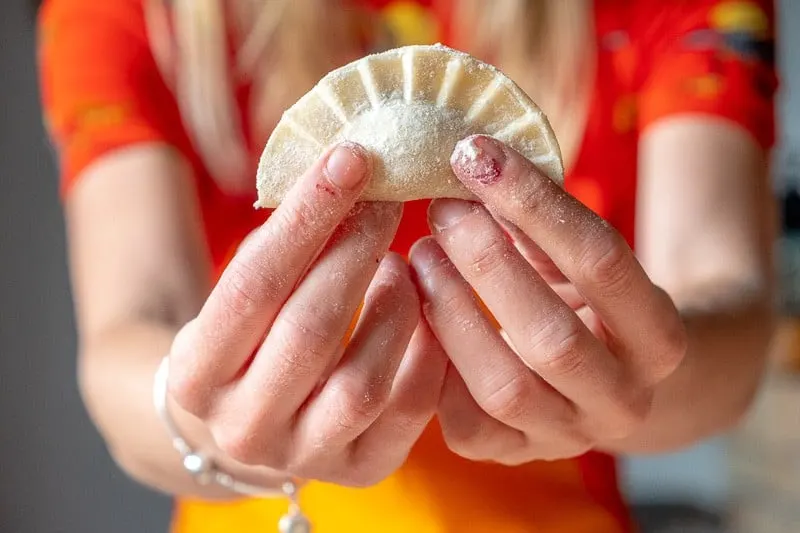
If you have only one dish on your must try Polish foods list, it should be pierogi.
Pierogi (Polish dumplings) were definitely my favorite food to eat when traveling to Podlasie. This recipe is a hit among the locals and travelers equally. It is one of the reasons why Eastern Poland is a must-visit.
Some even consider pierogi as the most popular Polish food. These little dumplings can be either sweet or savory and come in a variety of fillings. Only your imagination can limit them!
They are delicious and you won’t be able to keep your hands off of them. There are almost infinite variations of pierogi.
Do it at home:
For a traditional pierogi recipe, the dough is made by mixing wheat flour with boiling water. Set it aside for 5 minutes and add cold water to the dough crumble and mix, cover it with a cotton cloth and let it sit for 15 minutes.
Then add half a teaspoon of vegetable oil and knead the dough. Roll out the dough and cut circles.
The filling really is your playground!
For a sweet pierogi stuffing, you can use a thick marmalade. Or, why not, cut fresh strawberries and blueberries.
Then, add sugar to a bowl with strawberries and mix gently. Don’t add sugar to blueberries. Now, lay the blueberries, sugar, and the strawberries on the dough circles, fold the pierogi and press the ends together.
Now, put them in boiling water with a pinch of salt and oil. Take out the pierogi and serve them with cream, yogurt or fruits. It’s different and just the right mix between salty and sweet!
These are tiny packets of joy and great comfort food and are considered as Polish national food.
Polish pierogi can be eaten as a Polish main dish or as a side dish.
Are you traveling to Podlasie and want to know more about pierogi? Then, I recommend the dumpling workshop in “Polana Zubra”. It’s great fun and you’ll learn a lot!
Buy here your pierogi maker and memorabilia
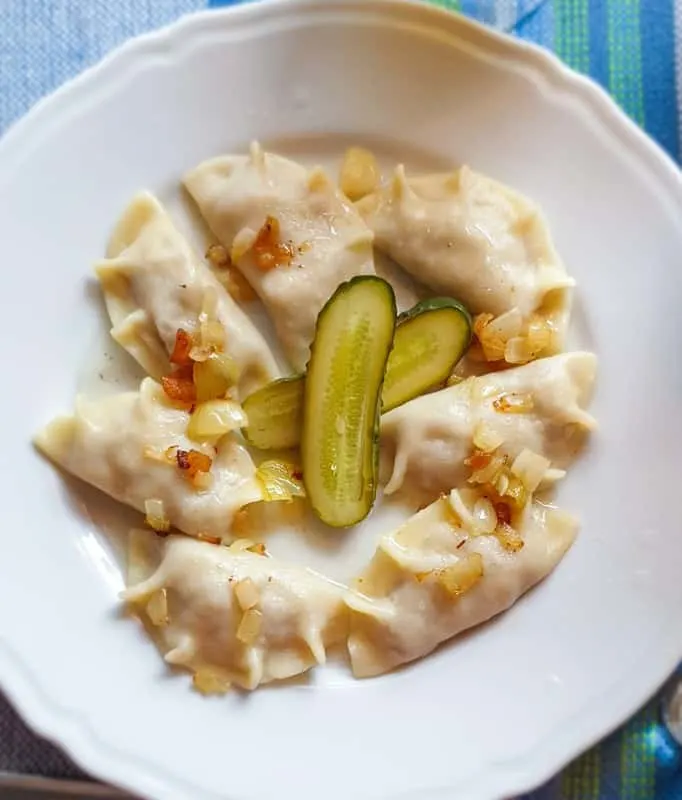
6. Anthill Cake

This has become one of my favorite desserts! Sweets from Podlasie have become more and more popular all over Poland. It’s perfect with morning coffee and evening tea.
What makes the anthill cake so special?
First, its name! Indeed, the cake looks like an anthill. This sweet treat has Lithuanian origins but you can find it all over the Bialowieza forest.
Do it at home:
Do you want to make an anthill cake at home? It’s delicate work but definitely feasible.
The dough is fried into crisp strips and arranged in several layers to make it look like a cone. Mix flour, eggs, and water for the dough. Knead the dough till it’s non-sticky, roll it out and make it paper-thin.
Cut it into rectangles of different sizes and fry it until golden. For the topping, mix water, honey, poppy seeds, almonds, raisins, and white sugar and cook it for 30 minutes.
Start building your anthill, pour all the topping and after it cools down, you have your ‘anthill cake’. What makes it special? The fried dough remains crisp even after you add the icing.
This local recipe is popular during all celebrations and the recipe is handed down from generation to generation. It’s a cake with a twist and only the simplest of ingredients from your kitchen can be used to make it. Pamper yourself and your family with this Polish delicacy and it will become an instant hit.
When looking for polish dessert recipes or traditional Polish desserts, the anthill cake is thus definitely a must.
Shop here the best Polish food
7. Warm Polish Soups
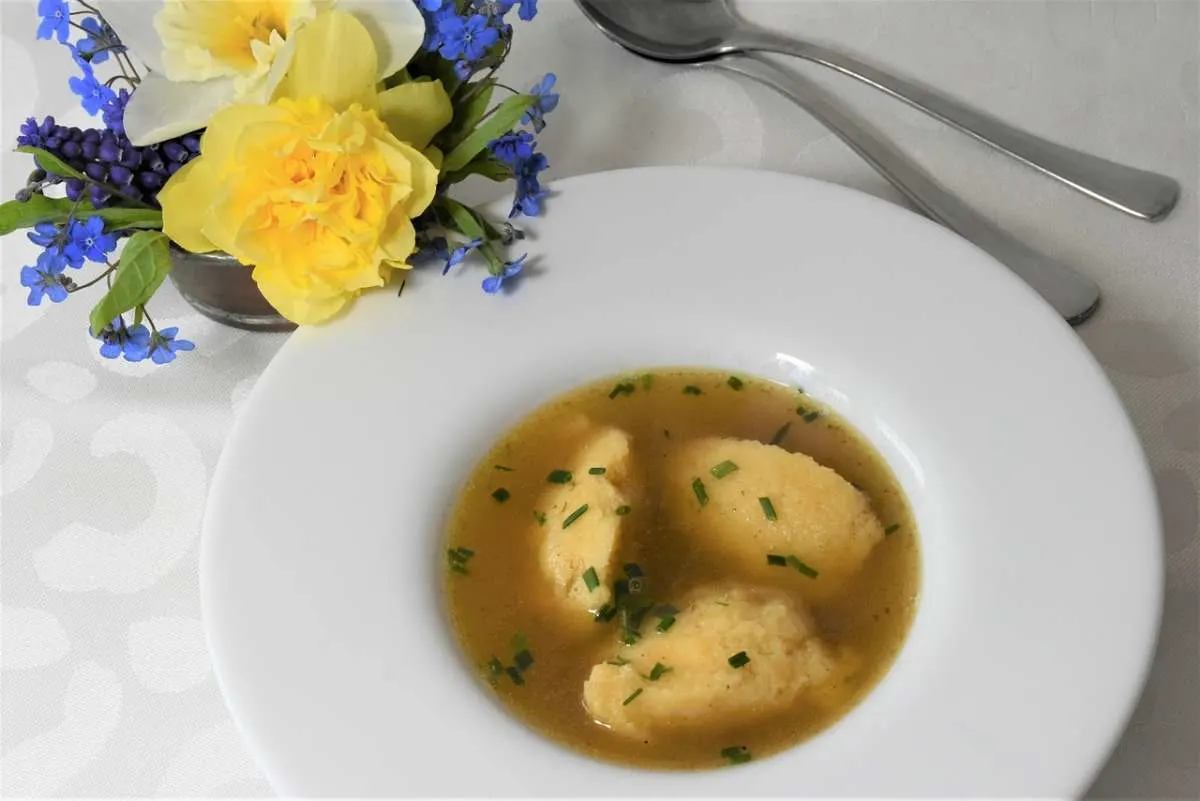
An essential part of any Polish meal is the soup. When you think about having a delicious bowl of yummy soup, Poland has a wide variety of them, from traditional to modern flavor.
Your visit to Poland, particularly Podlasie, will never be complete if you do not test some of their popular soups. The best part of these soups is that all are freshly made with the finest Polish meats and locally harvested vegetables. Literally, anything can end up in a soup!
Rosol is a Polish chicken noodle soup prepared with thin vegetable noodles added to a hot mix of pre-boiled carrots, parsley, onions, and chicken thigh meat. Herbs, spices, and salt are added to this popular, traditional Polish soup.
Flaki, made of strips of beef stomach seasoned with marjoram and bay leaves, with added vegetables, is yet another popular soup. Żurek is an intense Polish soup made from rye and ham. Barszcz czerwony is another popular soup which includes mini pierogi and their bread on the side.
Polish soups are definitely some of the best Polish food out there. You shouldn’t miss them when traveling to Podlasie, Eastern Poland.
8. Cold Polish soups
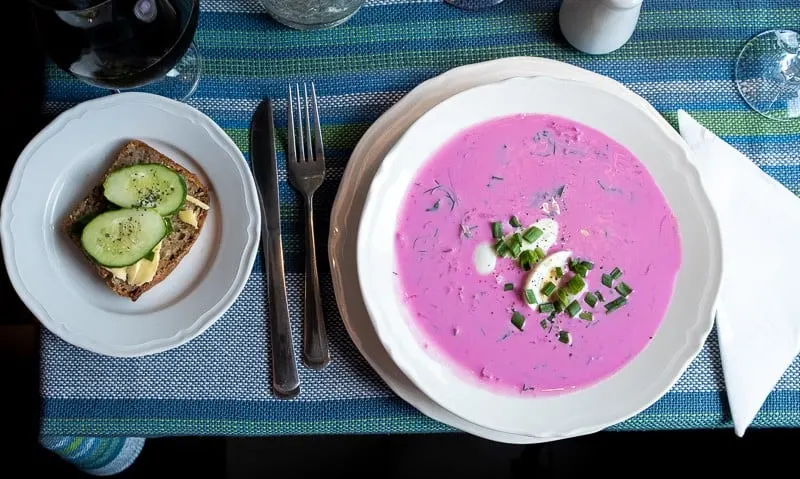
I was told that for a Polish home, never a meal is served without soup!
A hot bowl of soup in chilly weather can always make you happy, but how often do you crave a refreshing soup in the summer? Don’t worry; the Polish found a way to have soups, even in summer. But some of the most traditional food of Poland is actually a cold, pink soup!
I am talking about the surprisingly refreshing test of Chlodnik, the cold beet soup. Beet soup, also known as borscht is a popular food in Poland, Russia, and Ukraine. Chlodnik is the chilled version.
Shop here the best Polish cookbooks
Do it at home:
Chlodnik - Cold Borscht Soup from Poland
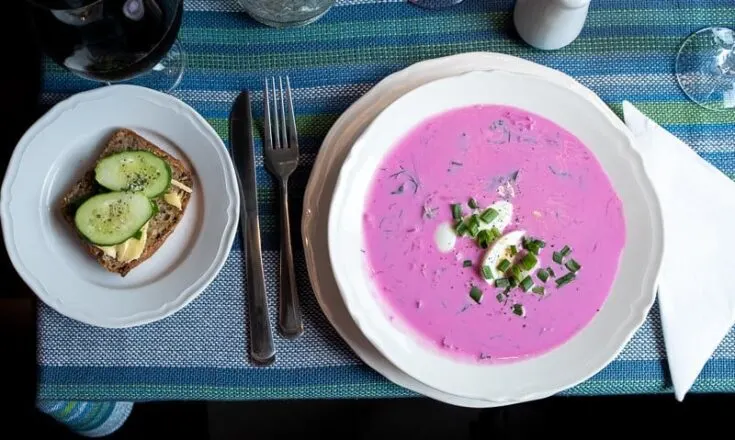
It’s easy to prepare and brings some parts of Podlasie to your home. This soup is a perfect fusion of beets and cucumbers with yogurt, sour cream, kefir, or buttermilk and with an incredibly intense pink hue.
Ingredients
- 3 beets
- 2 cucumbers
- 1 medium yogurt
- 2 tbsp sour cream
- 500ml kefir
- 500ml buttermilk
- 4 radishes
Instructions
- Mix beet sourdough with sour cream and yogurt.
- Make some fresh beet juice and add it.
- Add as many vegetables as you want to your soup. You can go with dill, chives, parsley,…
- Add chopped cucumber and radishes
- Leave the choldnik to mature in a cool place for 2 to 3 hours.
- Serve it with slices of boiled eggs
- voila; you have your authentic Polish cold soup.
Notes
When looking for traditional Polish dishes, the cold soups from Podlasie are definitely a must-eat.
Nutrition Information:
Yield:
4Serving Size:
1Amount Per Serving: Calories: 98Total Fat: 2gSaturated Fat: 1gTrans Fat: 0gUnsaturated Fat: 1gCholesterol: 9mgSodium: 276mgCarbohydrates: 12gFiber: 1gSugar: 11gProtein: 8g
9. Polish Drinks
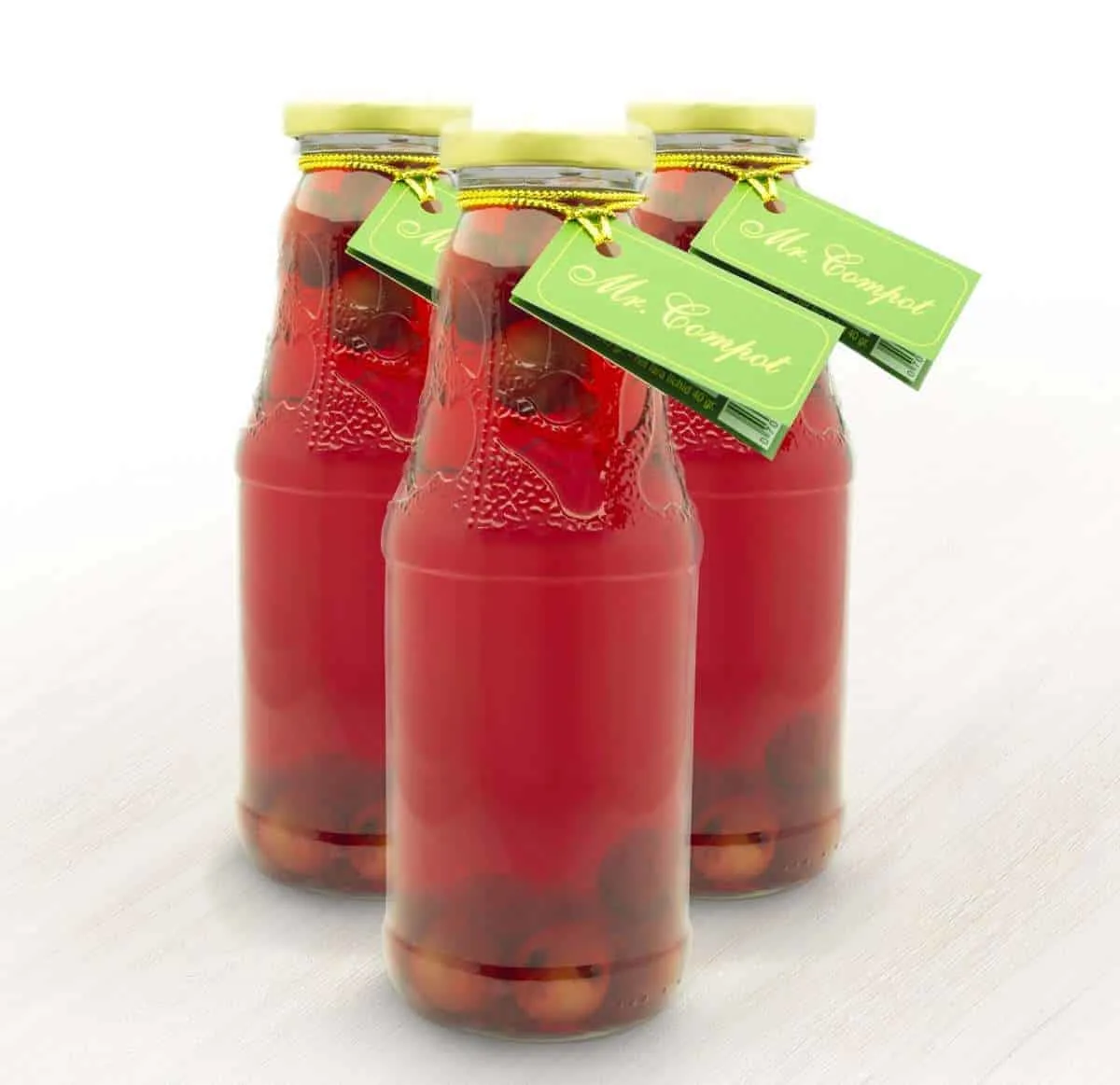
When it comes to popular liquid beverages, Poland has a lot to offer! And Podlasie, thanks to its vast agricultural land even more!
From exquisite soft drinks to mind-blowing alcoholic beverages, Polish drinks are varied and flavourful. In bars, you will find a wide range of quality beer, which Poland is famous for.
Beer has been brewed in Poland from the very beginnings of the country. Coming in many types, beer is the popular choice among tourists and natives alike. The most popular in bars are lagers, but go ahead and have a sip of various types of beer.
You will get a plethora of choices to discover new brands. In recent years, many traditional breweries opened, putting quality over quantity.
However, this has changed a lot. You will, of course, also find a wide diversity of cocktails in good bars. The popularity of wine only grew in the past decade in Poland, but you’ll be amazed by the quality.
Nalewka is a very unique Polish alcoholic beverage, a tincture-like drink. It contains 40-45 % alcohol and is made through the maceration of vodka or spirit with herbs, fruits, roots, spices, sugar or honey. To achieve the best taste Nalewka needs to age.
If you do not drink alcohol, don’t worry! There are plenty of other, non-alcoholic Polish drinks to choose from! Polish people do not really prefer cocktails. They generally opt for pure alcohol or wine.
One of the most typical (and healthy) Polish soft drinks is kompot. It is a sweet beverage served both hot or cold and made by cooking fruit in water, with added sugar. The fruits used are most often apples, apricots, peaches, rhubarb and various types of berries or cherries.
It is regarded as the real taste of Polish home. A seasonal, unique type prepared for Christmas from dried fruit is kompot z suszu.
10. Polish Vodka with Bison Grass

Most of the people may vote vodka as not the most interesting booze and flavored vodkas tend to do even worse. But even if you are not a huge friend of vodka, there is a local produce from Podlasie, Eastern Poland that you must try!
I am talking about Zubrowka, a very old Polish Bison grass vodka! Originating from the 16th century, the vodka comes with a unique, really nutty and almondy vanilla aroma, paired with a little spicy flavor.
Quite distinct as with most vodkas you usually don’t smell anything at all!
You can recognize the Zubrowka vodka by the distinctive blade of bison grass in every bottle. It gives the vodka its particular taste.
Northeastern Poland is a land of lush green pastures, picturesque villages and stomping ground of the continents heaviest land animal; the European bison.
These beasts have given their name to the food they eat. Bison grass, a plant prized for centuries for its taste and its supposed aphrodisiac qualities.
But to almost everyone on earth, it’s indistinguishable from ordinary grass. Just a few local families know how to spot it. A closely guarded secret handed down through generations.
As the name says, this slightly colored, bison grass extract is added to flavor the bison-grass vodka. The Polish city of Bialystok produces 76,000 pints of Zubrowka a day.
It mixes particularly well with apple juice which is sort of this signature serve that they recommend. Unlike most vodka, which is generally flavorless, the bison-grass vodka has a grassy, woodsy flavor with a powerful whiff of vanilla and almond.
Its wild complexity makes it a fascinating combo for all sorts of ingredients. Some even use it as a topping for ice-creams!
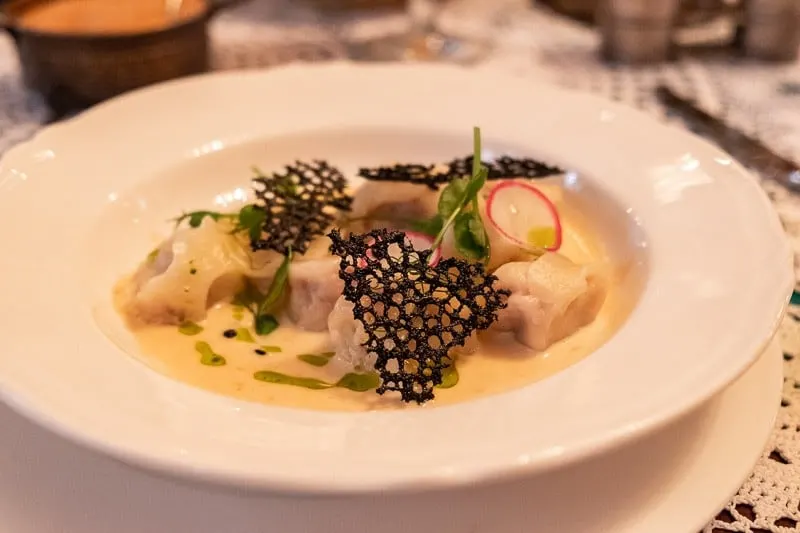
11. Tatra Beer
Tatra beer, made by the Żywiec Brewery, one of the most famous Polish beer brands. The beer is sold in most bars and restaurants and often drank alongside traditional Polish meals. It is a Pale Lager.
The beer is likely named for the famous Tatra Mountains, which are situated to the South along the Slovakian border.
If interested in how Tatra beer is made, the Żywiec Brewery is located in Żywiec, Poland and the museum is open to the public.
12. Flaki Polish Soup
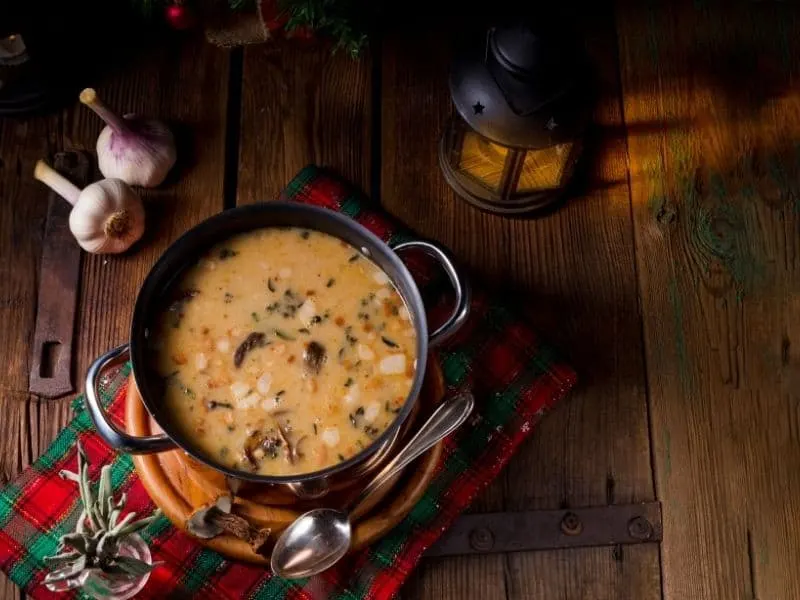
This traditional Polish food can sometimes be off-putting to visitors. But if you take a chance, you might find it’s some of the best Polish food you try!
Flaki is the Polish word for guts, but is also used to refer to ‘tripe’ soups in Poland. This meat stew is delicious, and is an important ingredient in many Polish food recipes. Flaki soup is one of the most famous dishes in Poland, you can find it on most Polish restaurant menus.
Although Flake soup is a popular Polish traditional food throughout the country, the way it is made varies by region, and many consider it to be one of their regional foods.
13. Polish Rosol (Chicken Noodle Soup)

This is another tasty traditional Polish soup, and one of the best polish foods if you are unwell. Many of us grew up eating chicken noodle soup when ill, and this is the Polish equivalent.
Rosol can be made with many different meats, although the most common meat is chicken. But as with many Polish food favorites, has adapted to include many different meats depending on what is available. Other varieties such as hunter’s rosol is made from different game meats and juniper berries, while royal rosol is made using three different meats and root vegetables.
It is traditionally served with capellini pasta, or another thing noodle, however some prefer this famous Polish food without the noodles. No matter what recipe is used, rosol is never made with pork as the broth must be clear in Polish cuisine.
Extra: Where to Eat Traditional Polish Foods in Podlasie
So now that you know what is the best Polish food to eat, you probably want to know where you can get all these delicious traditional Polish meals. Here are a few of my favorite restaurants in the Podlasie region.

- Stoczek 1929: the oldest restaurant in Bialowieza, serving amazing traditional Polish foods with a refined touch. Many wild game dishes and large local beverages menus, including beers from Belarus, Lithuania, and Russia.
- Restauracja Parkowa: set in the National Park Visitor Center. It has a large beverage menu card and it serves traditional Polish meals (also for kids).
- Restauracja Starowka: this charming, small restaurant is located in the neighbor town Hajnowka. It serves seasonal cuisine with local ingredients. The portions are huge and lunch is a delight!
- Carska, the Tsar restaurant in Bialowieza: located in a unique setting (the former train station of the Russian Tsar), Carska restaurant probably serves the finest food in the Bialowieza Forest. The setting alone is well worth a visit and I loved to explore Polish traditional food with a refined, almost gastronomic touch. It’s heaven for gourmets!
I hope you enjoyed my selection of the best Polish food from Podlasie and that this article encourages you to explore this fascinating region on your own! Have you been? Or are you planning to go? I would love to hear your thoughts in the comment form.
Before You Go: Top Tips for your Trip
- You’ll snap tons of photos and I love to take my GoPro in order to shoot even in extreme situations.
- Make sure to wear comfortable walking shoes and hiking sandals when traveling to warm countries. Consider trying some of these eco-friendly vegan hiking boots.
- Sunscreen is key! I always take with me my eco-friendly sunscreen by Thinksport.
- I always carry a light rain jacket, just in case. Pack smart with these organic cotton clothing companies.
- Be environmentally friendly and get one of these awesome backpacks made from recycled materials.
- Get in the mindset with these amazing wilderness survival books.
- Travel insurance is essential! If you haven’t already obtained travel insurance for your trip, travel is protected against all odds with HeyMondo.
In order to get more information on tourism in Podlasie and Poland in general, I recommend the site of Poland.Travel for its surroundings.
Some of the pictures in this article have been taken by the talented Kostas Deko.
Short FAQ
What food is Poland famous for?
Probably some of the most famous Polish food is sekacz and pierogis. Sekacz is a layered pastry cake traditionally eaten at weddings. Pierogis are dumplings which can have many different fillings from cheese and mushrooms to almost any kind of meat. Cold beet soup (chlodnik) is also a very famous Polish dish.
What is Polish food like?
Polish cuisine is very hearty and warm. As with most European cuisines, the traditional food of Poland has a lot of meat, especially game meat. Polish food predominantly uses spices like parsley, dill, marjoram horseradish and paprika, and favors root vegetables like carots, beets and celery.
What do Polish people eat for breakfast?
What Polish people eat for breakfast is similar to the rest of Europe: bread and butter or cheese, eggs and some kind of meat – typically sausage or ham. However, sometimes babka, a potato pie, is also eaten, particularly as leftovers.
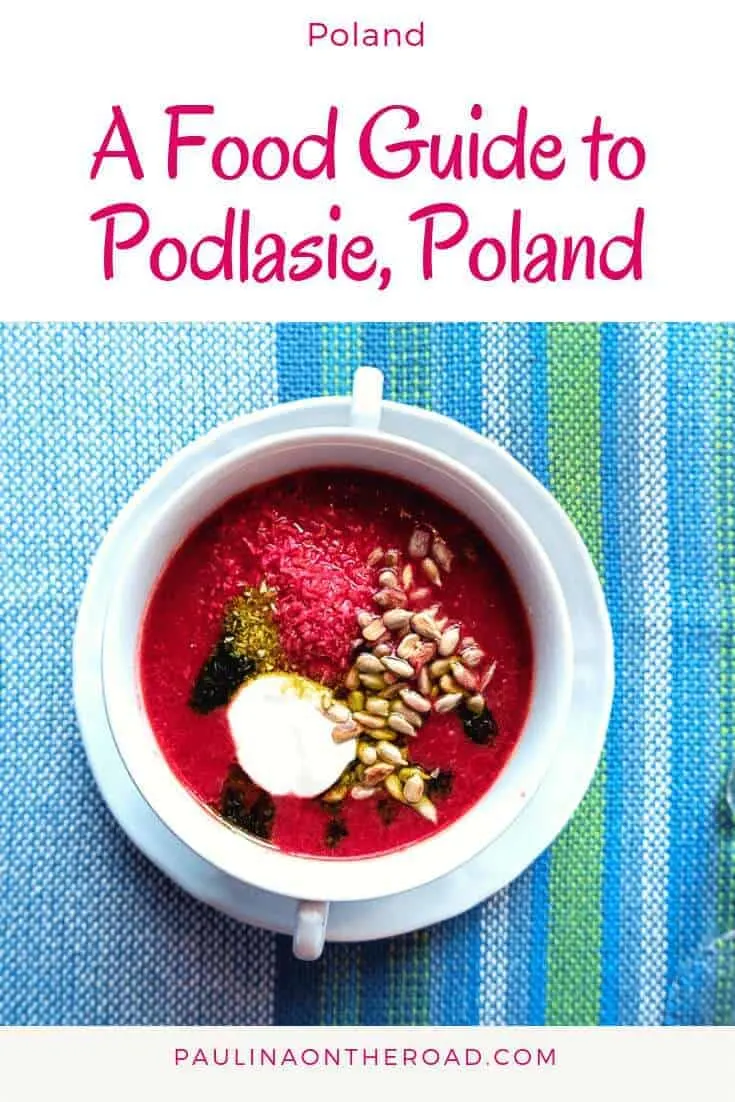
Like it? Pin it!
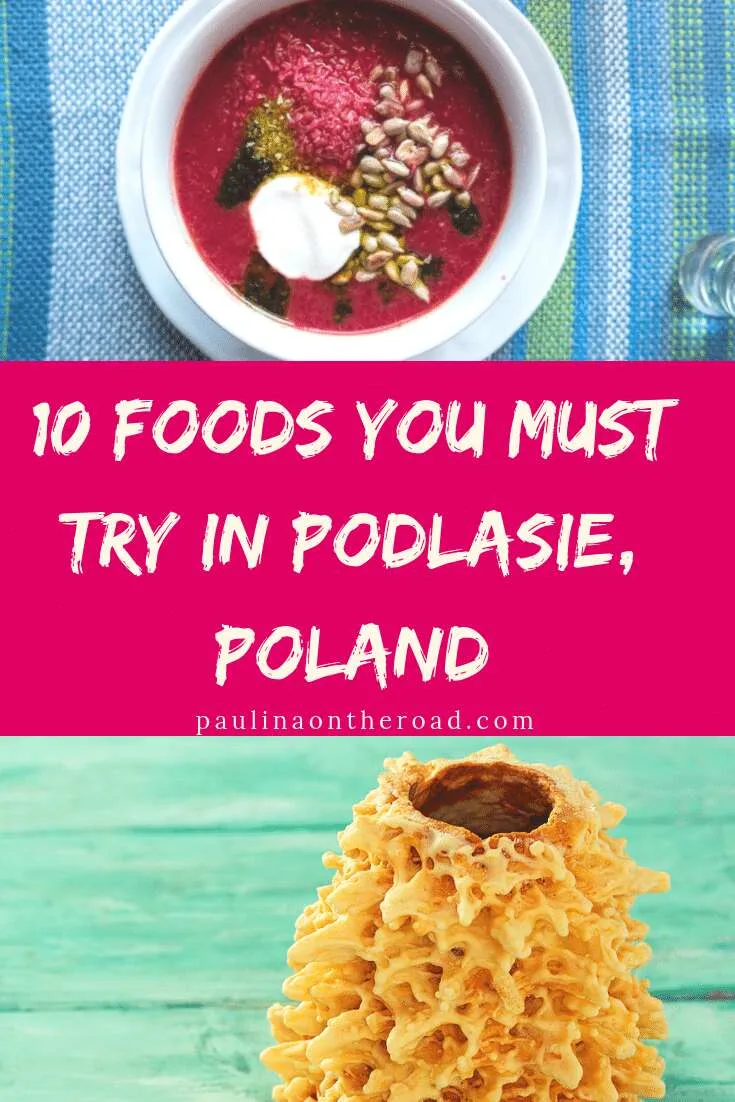
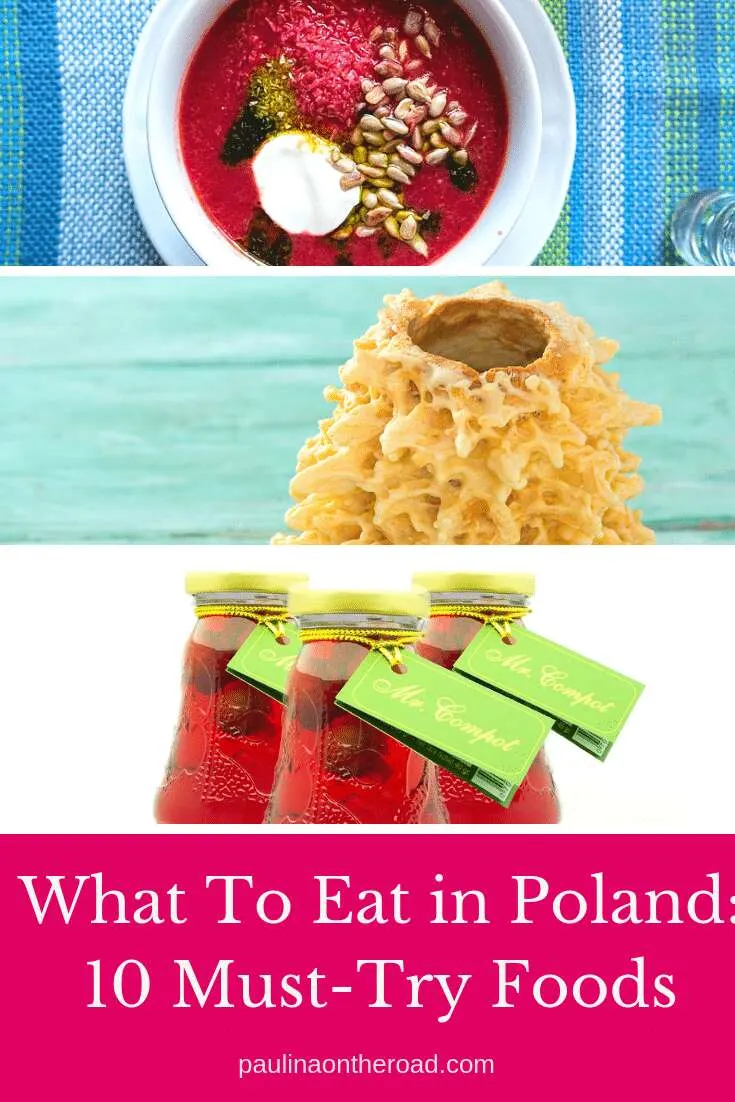

Hola! I’m Paulina, a seasoned travelette who crossed the Atlantic Ocean by Boat HitchHiking. On my blog, find expert insights for an extraordinary holiday through outdoor and sustainable travel like hiking, cycling, and sailing. Let’s embark on unforgettable journeys together! 🌍🚀


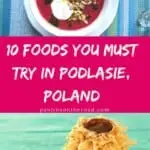
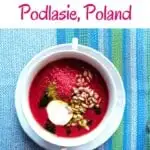
Chloe
Saturday 10th of August 2019
The Polish Pot Pie looks amazing!! I've never really tried Polish food, but now I really want to! It sounds divine!
Paulina
Monday 12th of August 2019
Many thanks for your kind comment! The food of Podlasie Eastern Poland is simply heaven! Healthy and tasty at the same time. It's definitely a reason to visit this pristine region.
umiko
Friday 9th of August 2019
All I can say, most of these food will make good friends with my belly. lol. The Secacz looks so interesting and I know I won't be able to make it at home. Take a lot of times! I like pierogi and we always stopped at a Polish Restaurant in Pittsburgh every time we went home for Christmas. That's where I tried my first Flaki. I thought only Asian people eat beef stomach. :-) I will see if they have Babka and Anthill Cake next time we go home.
Paulina
Saturday 10th of August 2019
Oh lucky you that you have a Polish restaurant so closeby! I can only recommend visiting Podlasie and enjoy those meals first-hand. I am obsessed with pierogis as well! :)
Yukti Agrawal
Friday 9th of August 2019
I never knew about so many Polish dishes to try out in Podlasie region. That Sekacz a tree cake looks very unique and beautiful and I hope its taste must be also great. Also the baked potato pie - Babka looks great and I would try it at home. With your authentic culinary dishes from Podlasie region, you have provided recipes which looks very easy to make it at home. Thanks for providing great recipes of all these unique dishes.
Paulina
Saturday 10th of August 2019
Many thanks for your kind comment Yukti. Indeed, the food alone in Podlasie is a reason to visit this beautiful region in Eastern Poland. It's such an intriguing mix of cultures. It's tasty and healthy at the same time. Babka was one of my favorites too!
Sandy N Vyjay
Friday 9th of August 2019
I am a total ignoramus as far as Podlasie cuisine or even Polish cuisine, in general, is concerned. So this post was indeed a revelation to me. One thing that immediately struck me was the colourful nature of the cuisine. Each of these dishes looks so beautiful and colourful, the pink soup, for example, looks so ravishing. The Polish tree cake is another dish that had my complete attention.
Paulina
Saturday 10th of August 2019
Yes, I am absolutely on your side for this! The food of Podlasie looks very colorful and very photogenic. On top, it's tasty and healthy at the same time. I can only recommend visiting Podlasie and enjoy and those delicious meals!
Amrita
Friday 9th of August 2019
Wow, the Podlasie food is a mix of so many cultures. It is bound to be interesting! All the dishes look amazing. Thanks for sharing the recipes as well. Polish Tree Cake and Pierogi looks interesting. I think I am going to try make Pierogi at home. The Tree Cake looks difficult to prepare!
Paulina
Friday 9th of August 2019
Dear Amrita, many thanks for your kind comment. Indeed, the tree cake is quite a challenge. But all the food in Eastern Poland, the Podlasie region is very intricate If you are a foodie, you'll definitely be very happy in Podlasie.